Este post também está disponível em:
Português
English
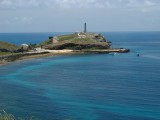
The Archipelago of Abrolhos is a refuge and nursery for humpback whales and its reefs, which according to the SCT, are internationally recognised as having the greatest biodiversity in the entire South Atlantic.
The name Abrolhos was given by Portuguese navigators in the 17th century.
As it was an area with many coral formations, dangerous for vessels (risk of shipwreck), they began to call the region “open your eyes”. Over time, it became Abrolhos.
The archipelago of Abrolhos is formed by five islands, but only one of them, Siriba, is allowed to be visited and disembarked.
In the dives you can appreciate the reefs and all the marine fauna.
The observation of humpback whales is the great fun of boat trips.
To give you an idea of the importance of this region, about 80% of the humpbacks counted on the northeast and southeast coasts of Brazil are usually sighted there.
See the map of the Costa das Baleias
Videos about the Abrolhos Archipelago
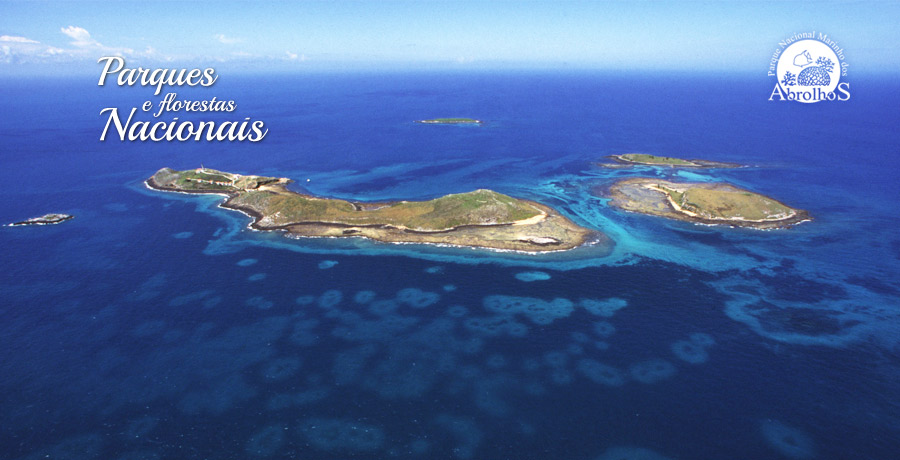

Fundo do mar do Arquipélago de Abrolhos
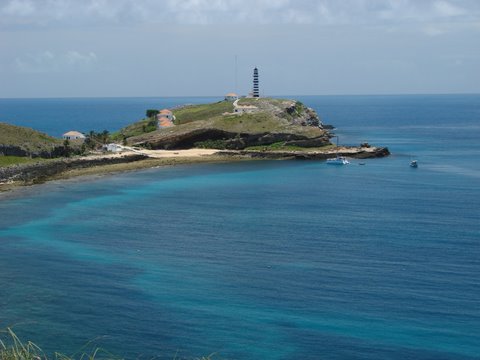
Arquipelago de Abrolhos - Globo Reporter
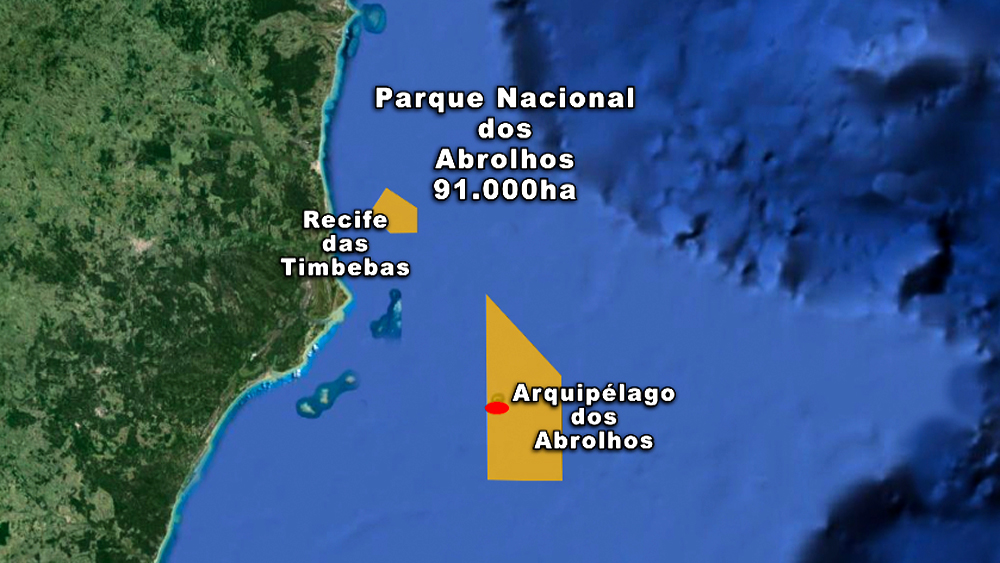
Arquipélago de Abrolhos - Reportagem Completa49:17
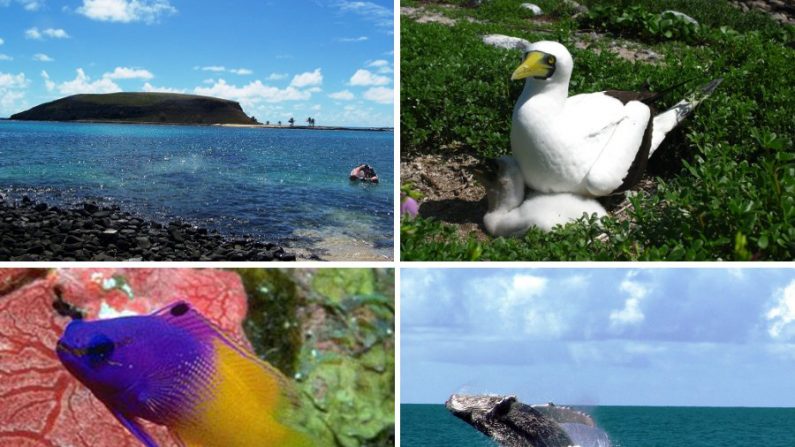
Arquipélago de Abrolhos - Mar de Abrolhos10:23
Archipelago of Abrolhos – Characteristics, Geography and Tourism
If in the sea of Abrolhos it is possible to see an average of 30 humpbacks per day, among other whales, such as the right whale and the minke whale, as well as cetaceans such as the bottlenose dolphin, the rough-toothed dolphin and the grey dolphin, in the air you can see a profusion of birds.
The five small islands, arranged in an arc because they were probably once part of a volcano crater, are home to large populations of various seabird species.
The Redonda is occupied by frigatebirds, the Guarita by benedicts, in the Sueste the brown boobies are concentrated, while the white boobies are divided between Siriba and Santa Bárbara.
Underwater, Abrolhos is home to the largest coral reef in the South Atlantic, including the so-called chapeirão, a unique mushroom-like coral formation.
From April to December, the visibility reaches 20 metres, turning the place into a true natural aquarium, with a multitude of colourful little fish, swimming among groupers, rays, turtles, barracudas and sharks.
5 species of sea turtles found in Brazil
.
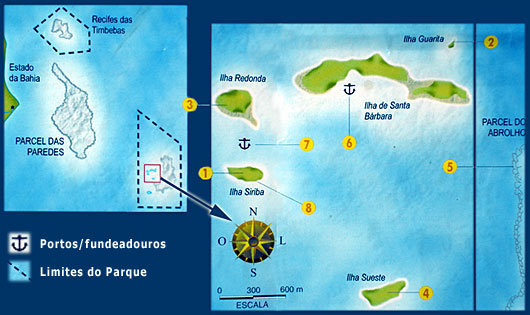
1. The 5 islands of the Abrolhos Archipelago
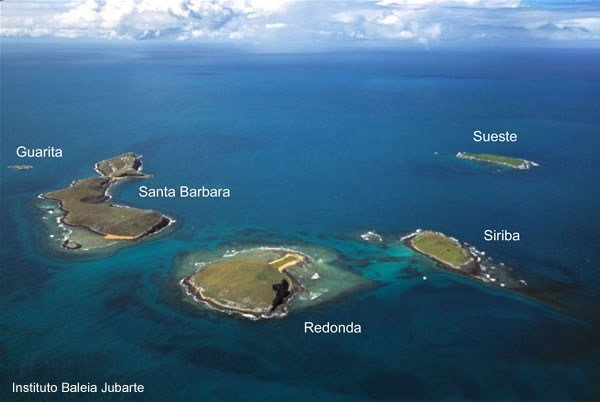
1. Santa Bárbara
The only inhabited island, where some military and Ibama employees live. Visits to the Abrolhos National Marine Park are strictly controlled so that all this luxurious environmental heritage remains well preserved.
2. Siriba Island
The only one in the Park open to visitors, when you disembark you walk along a 1,600 metre trail that surrounds the island. Hundreds of small shells and corals accumulate at the south-western tip of the island, forming a kind of beach. The other end is formed by natural pools that are home to colourful fish and snails. A large number of pilots seek out Siriba to make their nests.
3. Guarita Island
It is the least of the Park and full of rounded stones that seem painted white. In reality, this colour comes from the droppings of the countless birds that live there, such as the Benedito, which have chosen the island for roosting and breeding.
4. Redonda Island
The highest of all, second only to Santa Bárbara, which is outside the boundaries of the Park. It has steep slopes where frigatebirds usually nest. During the summer, it is visited by loggerhead turtles to lay their eggs.
5. Sueste Island
The most distant of the archipelago, located 1,300 metres from Siriba, it is also the most preserved, precisely because of its difficult access. The absence of man on the island allows seabirds to spread their nests in almost every corner.
2. Diving in the Abrolhos Archipelago
2.1. Wreck of the Ship Rosalina
The stern is 20 metres deep, but the bow surfaces at low tide, offering good opportunities for snorkelling and scuba diving. Peek through the hatches and “climb” the ladder on deck.
Beware of currents, which are often very strong there.
2.2. Santa Barbara Island Cove
One of the main diving spots in the Park, it allows the observation of whiting and budgies that, accustomed to human presence, approach the divers.
2.3. Siriba Prairie – Redonda
Located between Siriba and Redonda islands, it is a shallow area with a sandy bottom, where coral heads are found in profusion. Schools of surgeonfish and huge, slack-square whiting also cruise here. If you look closely, you can see butter and quiver rays buried in the sand.
2.4. Siriba Caves
The cavities in the wall of Siriba Island attract various fish, which use them as shelter. Here you can see caramurus (or greenling), basking fish and the colourful kingfisher or ciliaris.
2.5. Timbebas Reef
Included in the Park area but far from the archipelago, the reef is visible at low tide and is a great spot for snorkelling. Fish of all colours and shapes can be seen at the site, where large fans of fire coral are found.
3. Siriba Island Trails
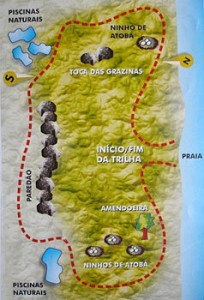
The only existing trail in the Park goes around Siriba Island, allowing you to observe its rock formations. The most interesting, however, is the possibility of seeing the atobás’ nests up close.
In all, the walk is 1,600 metres long. Depending on the tide, it is not possible to go around the entire island, as the waves break over the rocks, making the walk dangerous.
Here it is mandatory to be accompanied by a guide, who will show local flora, fauna and geology. Walking around the interior of the island is forbidden due to the presence of seabirds and their nests on the island.
Be sure to take a peek into the natural pools, where a multitude of marine creatures give life to the dark rock.
How to get to the Abrolhos Archipelago
The only way to get to Abrolhos is by boat, from the city of Caravelas, which is the closest to the islands and is about 836 kilometres from Salvador.
The journey time to Abrolhos varies from 2.5 hours to 5 hours, depending on the type of boat.
Abrolhos Archipelago Tourism and Travel Guide



















